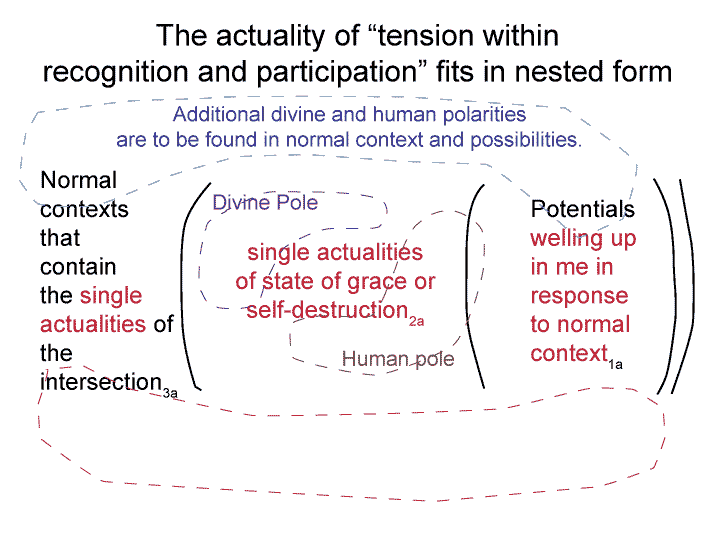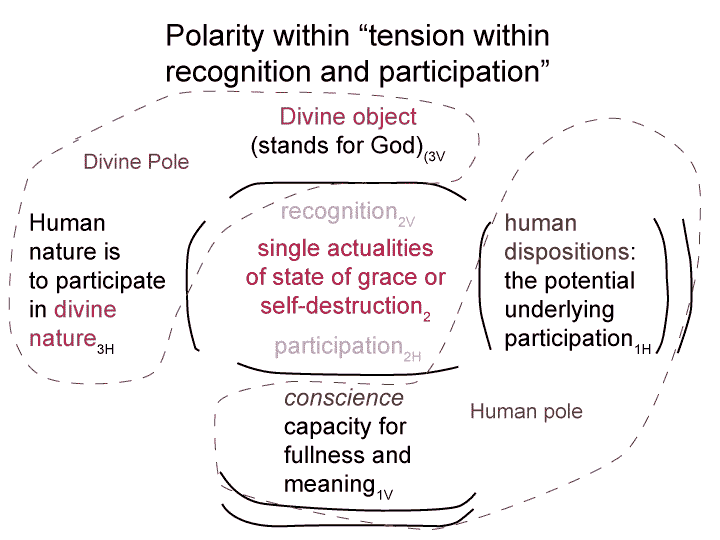Man and Sin by Piet Schoonenberg (1964) 2.1EA
Summary of text [comment] page 69
[Let me see whether I can package the prior blogs.
First, the intersection:
The intersection of participation and recognition is captured in two slogans:
(1) Our human nature is to participate in God’s divine nature.
(2) ‘I recognize myself’ in fullness and meaning only when ‘I recognize myself as an image of God’.
‘God’s design (a relational object)3V’ brings ‘both recognition and participation2’ into relation with ‘the possibilities for conscience, ‘what I am able to recognize’, and self1V’.
‘God’s nature (a relational structure)3H’ brings ‘both recognition and participation2’ into relation with ‘the potential of human dispositions and natures1H’.
Now, what about human and divine poles that Schoonenberg mentioned?
The divine poles appear to be the normal contexts. The human poles appear to belong to the potentials.]


